Research findings
Statistics and infographics from our research.
As part of our Changing the image of disability campaign, we commissioned new research from Ipsos. We also conducted our own research with disabled people, communications and brand leads from within our business membership. Here are some of the key findings.
Ipsos research
Ipsos conducted research for us which captured the views of over 6,500 adults aged 16-75 across the UK, including over 2,300 adults who identified as disabled, as defined by the Equality Act.
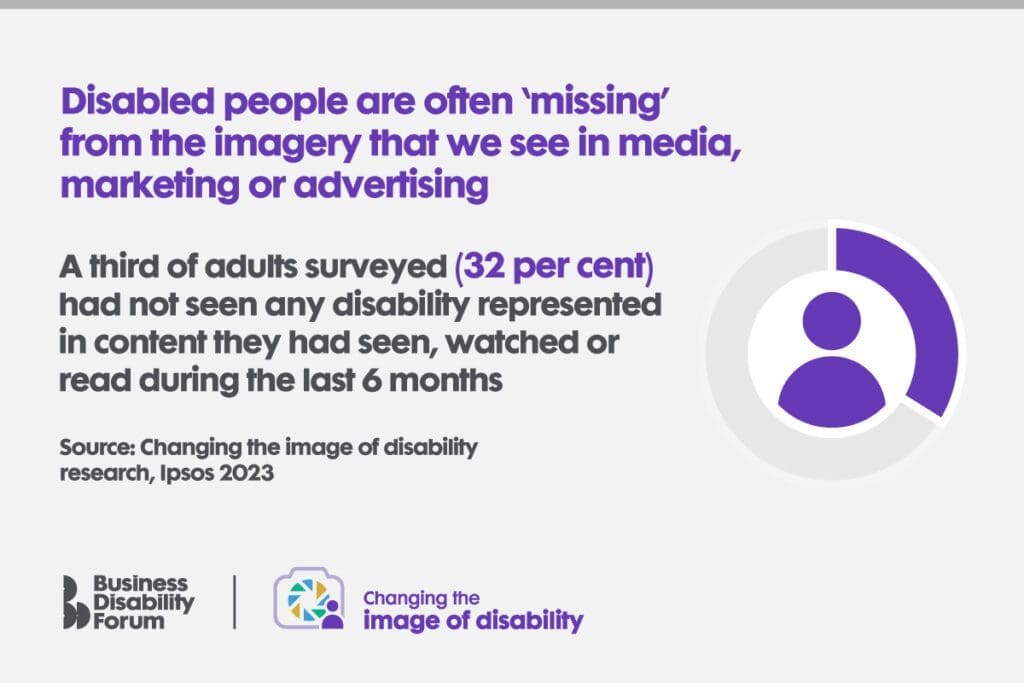
Disabled people are often ‘missing’ from the imagery we see in media, advertising or marketing. A third of adults surveyed (32 per cent) had not seen any disability represented in content they had seen, watched or read during the last 6 months. [Ipsos 2023]
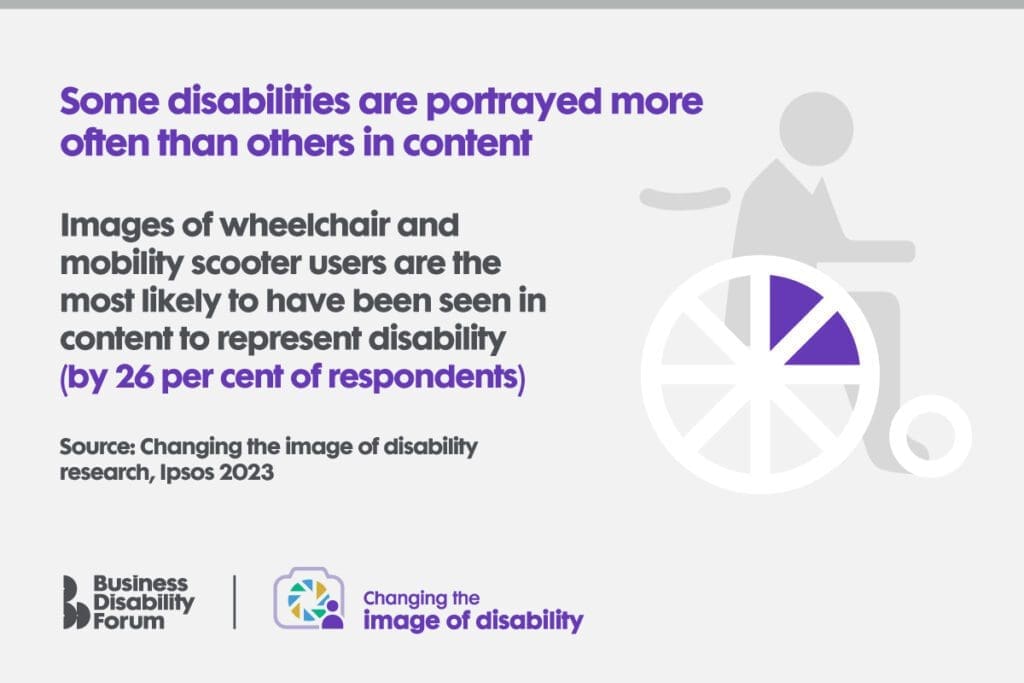
Some disabilities are portrayed more than others in content. Images of wheelchair and mobility scooter users are the most likely to have been seen in content to represent disability (by 26 per cent of respondents). [Ipsos 2023]

Few disabled people agree that their own experience is reflected in the images they have seen. Less than a quarter (23 per cent) of people with a disability surveyed agreed that images of disabled people used in content they had seen, watched or read, reflected their own experience of disability. [Ipsos 2023]

Uncertainty exists around disability. 1 in 6 adults (17 per cent) said they did not know or were unsure if they had seen disability represented in content they had seen, watched or read during the last 6 months. [Ipsos 2023]
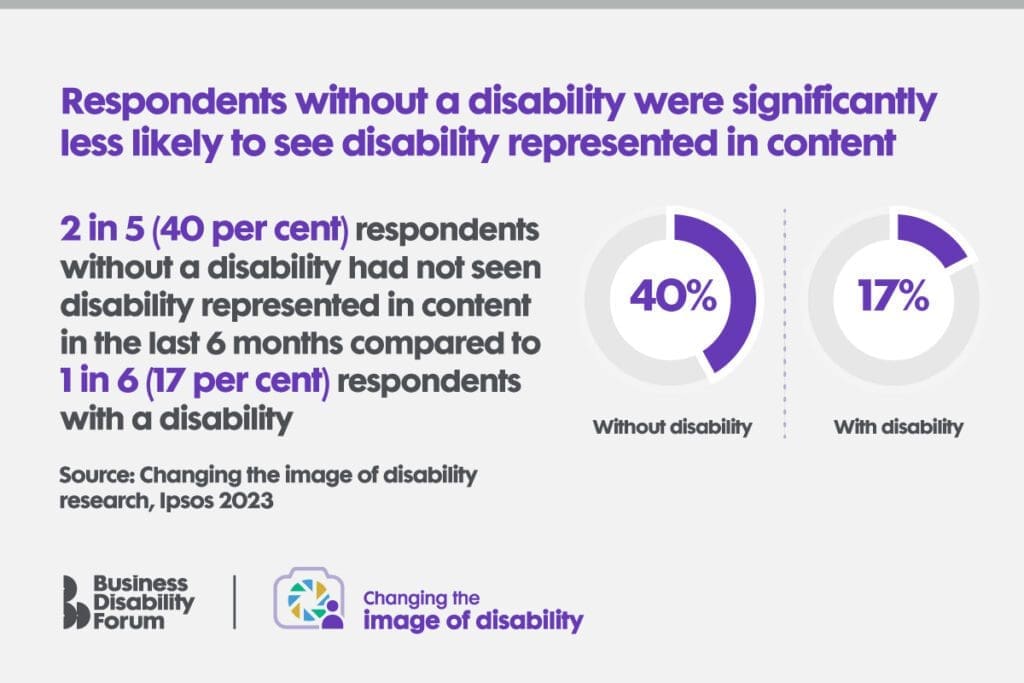
Respondents without a disability were significantly less likely to see disability represented in content than those with a disability. 2 in 5 (40 per cent) respondents without a disability had not seen disability represented in content in the last 6 months compared to 1 in 6 (17 per cent) respondents with a disability. [ Ipsos 2023]
Note: Data has been weighted to the known offline population proportions for age and working status within gender as well as government office region, social grade and education. Fieldwork was conducted 3rd November – 12th December 2023
Business Disability Forum research – disabled people

“We see extremes – disability is terrible, disability is a superpower. We don’t see the in-between of disability is normal.” [Disabled focus group participant. BDF 2023]
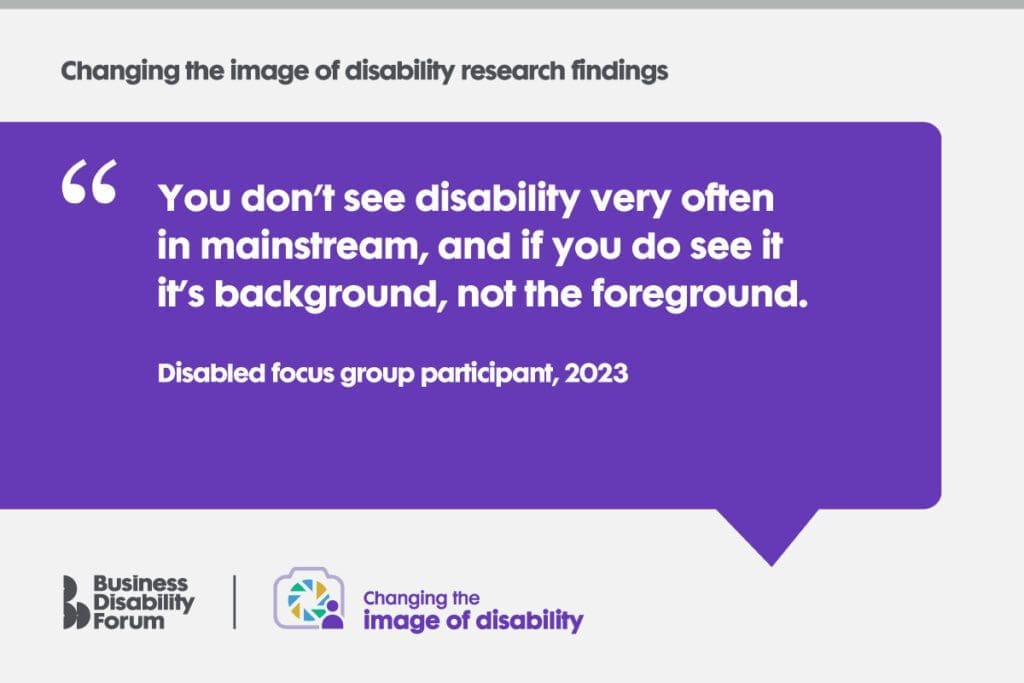
“You don’t see disability very often in mainstream, and if you do see it it’s background, not the foreground.[Disabled focus group participant, BDF 2023]
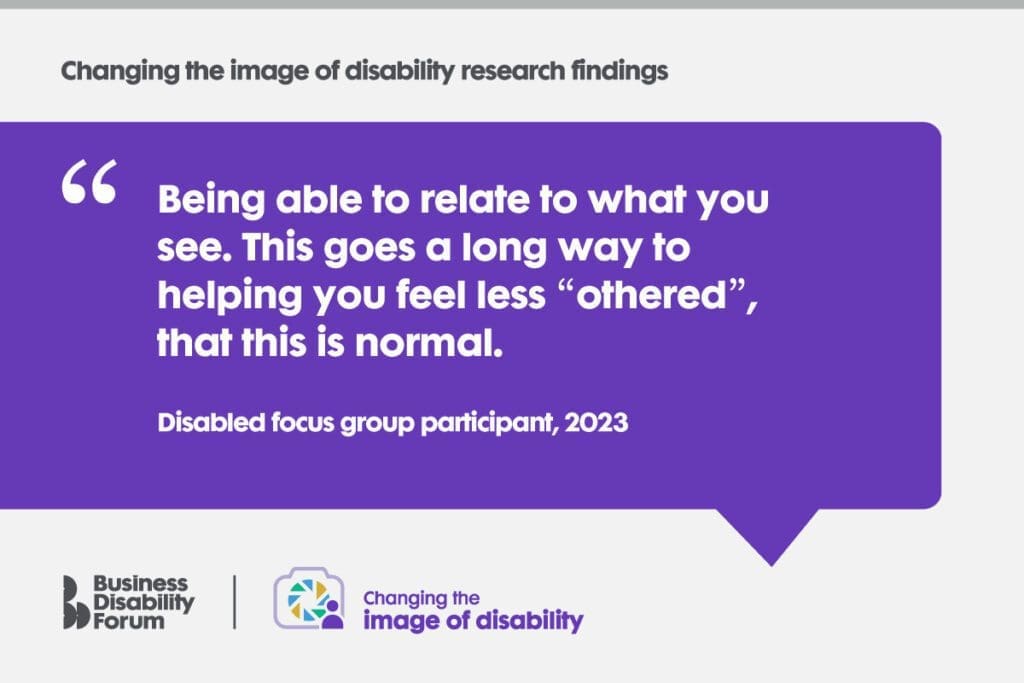
“Being able to relate to what you see. This goes a long way to helping you feel less othered, that this is normal.” [Disabled focus group participant, BDF 2023]

“I have been using walking sticks since a child but you only see images of elderly people using them. People often say to me you’re a bit young for that. You don’t see many people using mobility aids. There’s a big age gap.”[Disabled focus group participant, BDF 2023]
Business Disability Forum research – communications, marketing and brand leads
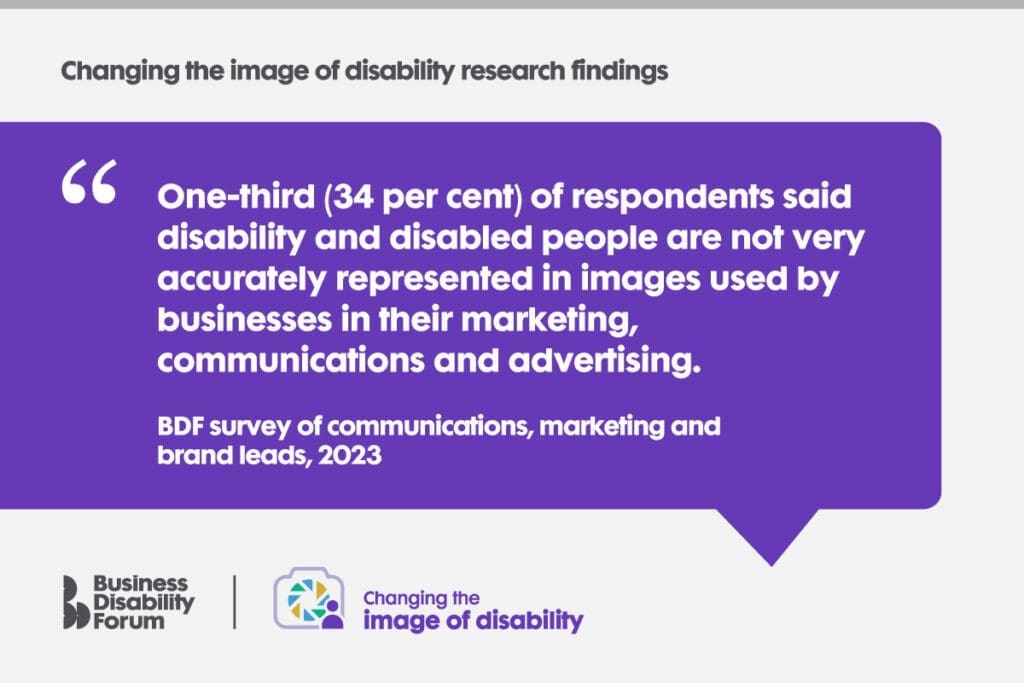
One-third (34 per cent) of respondents said disability and disabled people are not very accurately represented in images used by businesses in their marketing, communications and advertising. [BDF survey of communications, marketing and brand leads, 2023]

“There’s a challenge around representing hidden impairments. I find this difficult when I’m considering imagery that I’m going to use – I struggle to find images that are authentic and reflective.” [Communications professional BDF focus group participant, 2023].
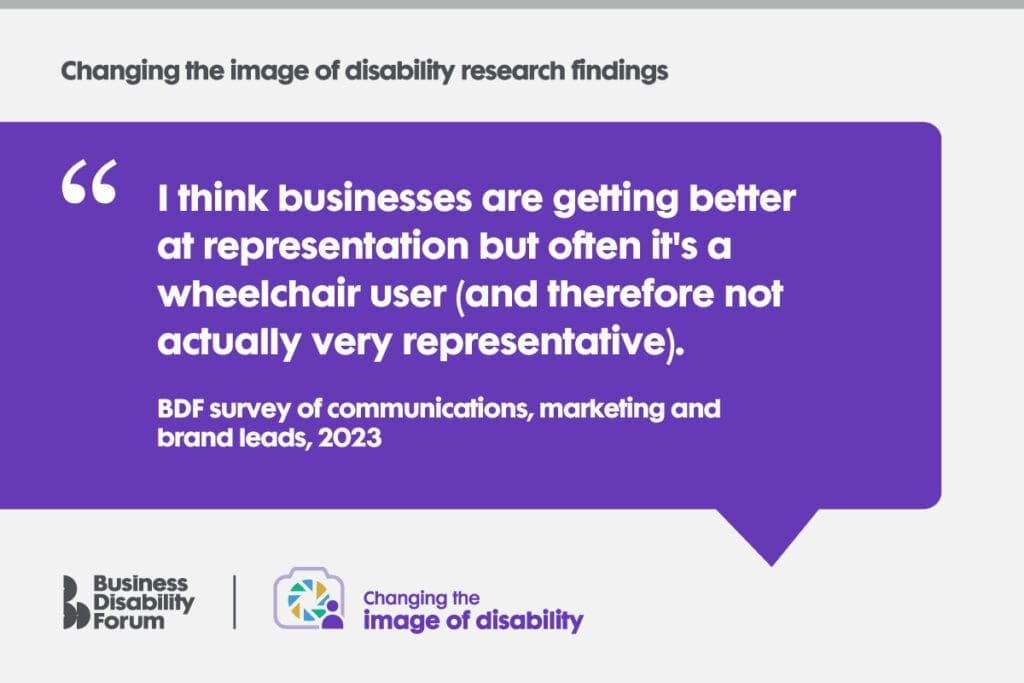
“I think businesses are getting better at representation but often it’s a wheelchair user (and therefore not actually very representative).” [BDF survey of communications, marketing and brand leads, 2023]
If you require this content in a different format, contact enquiries@businessdisabilityforum.org.uk.